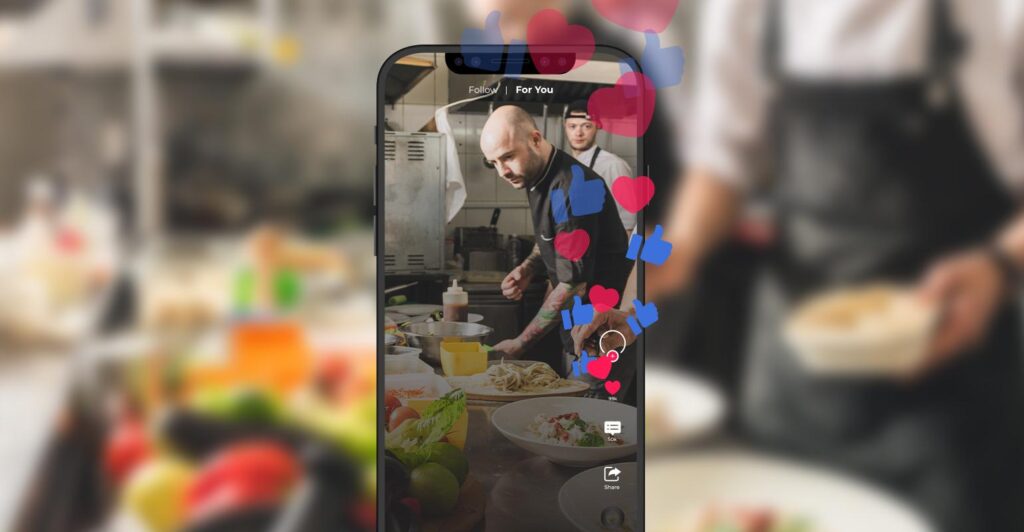The TikTok generation demands more from restaurant brands — or else
Social media has turned every restaurant customer into a powerful kingmaker. Rather than fighting for control, it’s time brands started listening.
14 October 2024
Share this exclusive content from Saladplate

Photo Credit: Pexels / Change C.C
By now, most people understand on some level that social media empowers its users in their relationships with the brands they support. But for the restaurant industry, this isn’t just an observation, it’s a warning. The wrong misstep on social can literally make or break any brand. And it doesn’t matter whether you’re a Michelin star winner or just a fast-casual lunch spot — the urgency is the same.
Take the recent episode of TikTokers’ dust-up with Chipotle. What began as a few complaints from customers about shrinking portions, quickly turned into a viral campaign with people filming workers to pressure them into giving bigger scoops of rice and pico de gallo. And while the brand ultimately earned loyalty and bigger sales by listening to customers, addressing their concerns, and retraining employees store-by-store to fix the problem, this PR crisis signaled the unwieldy nature of the power dynamics.
Even now, societal norms are still changing as a result of social media. According to various studies, people who grew up with phones and have lived their entire lives on social are increasingly demanding a deeper level of transparency and don’t feel shy about making their feelings known. They also know that controversial takes — like a limited-service worker not giving them enough meat — are going to perform well. In fact, the algorithms are actively training them to share spicier opinions.
This makes things more volatile for restaurants that have no choice but to play the social-media game. However, it’s also an opportunity, allowing restaurants who are listening to engage and respond like Chipotle did, earning more loyalty and growth in the process.
Where dining is a contact sport
Since the first foodie took a picture of a meal or publicly messaged a brand account to air a grievance, restaurants have generally been aware of social-media food culture and the rules at play. But that doesn’t make it any easier, especially for quick-service chains with many different locations in various regions. When you have a large company run by independent franchisees, it can be hard to have quality control and be assured that everyone is operating at the same standard. And if one location has an issue, because of social media, the harm can spread to all locations incredibly quickly. In this climate, it’s easy for even a well-meaning brand to get bruised.
But restaurants have to go where their audience is. And according to an MGH survey, 53% of millennial TikTok users have visited a restaurant after seeing it on the social-media platform in comparison to 38% of TikTok users across all generations — approximately 51.8 million diners. Then, when you consider that 78% of restaurants that market on TikTok said they realized positive ROI within the first six months, you can understand why underserving social media is not an option for the industry.
On TikTok and Instagram, the right praise can be equally as seismic as the wrong complaint. For example, a good friend of mine recently opened a pizza restaurant called Danny Boy’s near UCLA. Despite its prime location, foot traffic was low when college wasn’t in session, and there was a real fear of closing down before they even had a chance to get started.
It only took a single TikTok review to change everything.
A popular TikToker, @how.kev.eats, reviewed their pizza, gave it a 9.1/10, and mentioned that it was comparable to a great NYC slice. That review blew up, racking up almost a million views across TikTok and Instagram in under 24 hours. A mad dash to Danny Boy’s ensued, causing lines out the door and the momentum they desperately needed.
For restaurants, the possibility of that type of response is worth the work. It’s why some invest in state-of-the-art social media listening software to make sure they have a pulse on exactly what is being said about them and if there are any issues, getting ahead of them. Still, technology won’t do all of the work. Restaurants need to go beyond posting the same evergreen content across social channels and instead take the extra step of really becoming a social media native brand — with a cohesive brand message and strategy that fosters a real conversation with their customers.
Becoming social-powered
Ultimately, for more fast casuals and QSRs to really succeed on social, a change in thinking is needed — one that embraces the speed, relevancy and unique culture that social media provides.
- Go native: New restaurants need to be social from the start while existing ones need to jump headfirst into the deep end and get a better feel for what makes audiences tick. That means using social-media listening platforms like Meltwater, Brandwatch or Hootsuite to inform their strategies from the ground up — understanding that social is where news breaks, where trends emerge and where people form their beliefs. All marketing and brand strategies have to be rooted in what is happening on social media and what audiences talk about and care about there.
- Assume no one cares: In a world where you can literally have hundreds of restaurants delivering to you within 30 minutes, offering a new special or menu item isn’t enough. You need to do something really unmissable to get people to drive to your restaurant. That means being bold and taking risks worthy of TikTokers’ attention. Chili’s is a master at this, continually listening to what is happening on social media and responding with social-borne ideas like their Chili’s wedding catering. Similarly, their promotion of the Triple Dipper went viral on TikTok, accounting for about 40% of the chain’s sales growth.
- Move fast and make things: The media cycle is so quick and the trend cycle is so fast that you need to constantly be on the offensive, putting compelling campaigns, products, and partnerships into the market to stay top of mind. Some smaller regional restaurants are great at this, like Lotus Seafood, a Texas brand that has half a million followers on Instagram — more than some national chains have. They do an amazing job of understanding the irreverence of social media culture, quickly jumping on trends to amass a large following that has made them one of Houston’s most popular, fastest growing restaurants.
These approaches need to resist the urge to have too many rules — regional restaurants and local franchises especially need room to be personalized and react to their audiences without doing things that will compromise the overall brand. The goal isn’t to fight for control from empowered social media audiences, but to show them that restaurant brands can add value, play along and listen to their needs. Those that do will not only earn market share, but loyalty to spare.

Source: Nation’s Restaurant News



